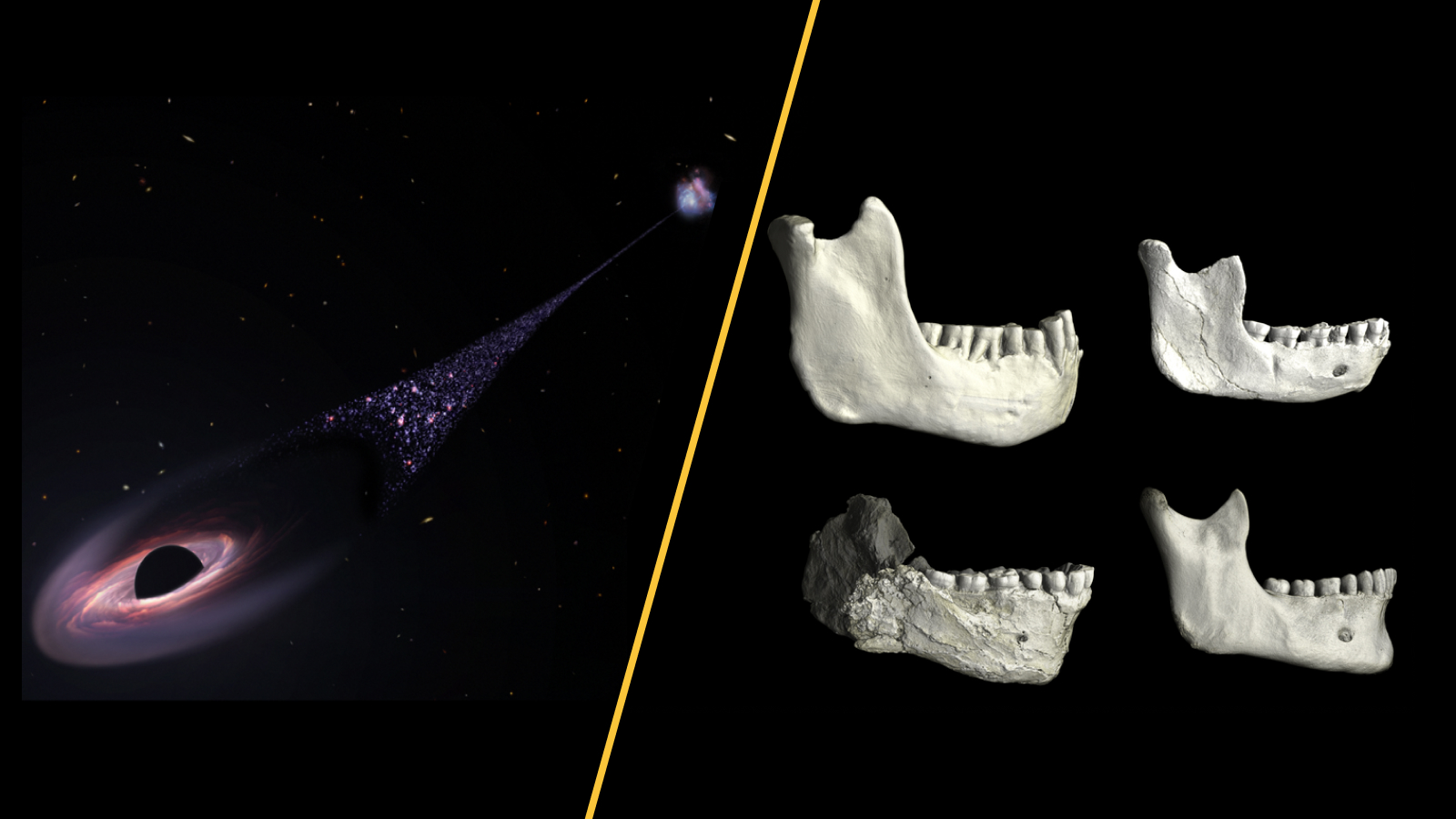China's Moon Lander Just Revealed a Secret on the Far Side of the Moon

A Chinese mission to the far side of the moon may have unearthed the secrets of the moon's mantle.
The mission sent a lander to the largest crater in the solar system, where an impact likely sent fragments of the mantle flying to the moon’s surface. The new research may be the best look yet at the second layer of Earth’s natural satellite, which remains largely mysterious. The moon, like Earth, has a crust, mantle and core. The crust is made of plagioclase, or aluminum silicate, but the mantle's composition has remained mysterious — neither the U.S. Apollo program nor the Soviet Luna missions in the 1960s and 1970s managed to bring back any rock samples containing mantle material.
The Chang'E-4 lunar lander, sent to the far side of the moon by China earlier this year, may finally be getting a peek at the mysterious mantle. Some of the first measurements sent back by the lander's moon rover suggest that the massive South Pole-Aitken crater contains fragments of the moon's upper mantle. [Top 10 Amazing Moon Facts]
Mystery mantle
The soil tested by the visible and near-infrared spectrometer aboard the Yutu-2 rover shows patterns of light reflectance that indicate high levels of high-calcium pyroxeneand olivine, two minerals found in many igneous and metamorphic rocks and long-hypothesized to make up the moon's mantle. Olivine, which is abundant in Earth’s mantle, has previously been difficult to find on the lunar surface, though, researchers led by Chunlai Li of the National Astronomical Observatories at the Chinese Academy of Sciences wrote today (May 15) in the journal Nature.
"Li and colleagues' results are thrilling and could have considerable implications for characterizing the composition of the Moon's upper mantle," Patrick Pinet, a planetary scientist at the Research Institute in Astrophysics and Planetology in France, wrote in an opinion piece accompanying the new paper. (Pinet was not involved in the research.)
Planetary scientists suspect that the moon formed when an enormous impact threw huge amounts of material off of the early Earth. In the moon's early days, the satellite's entire surface would have been a molten magma ocean. In that ocean, minerals separated out by density, with lighter plagioclase rising to the top and heavier, iron- and magnesium-rich minerals sinking into the mantle.
Understanding this process on the moon is important, Pinet wrote, because the moon has the same three-layer structure as Earth, but without the complications caused by plate tectonics (which Earth has but the moon lacks).
Get the world’s most fascinating discoveries delivered straight to your inbox.
"It is therefore of tremendous value for understanding the evolution of planetary interiors," Pinet wrote. But without direct evidence of the moon's mantle composition, that's a difficult task.
Underneath the surface
China's Chang'E-4 lander may be changing all that. On January 3, 2019, the lander settled down in the South Pole-Aitken, which is a whopping 1,553 miles (2,500 kilometers) in diameter and is pockmarked with smaller craters. Researchers think that the impact that created the basin was big enough to penetrate deep into the moon's mantle and spew some of its minerals to the surface.
The first results from the visible and near-infrared spectrometer suggest that the impact did just that. The instrument uses beams of light on the visible and near-infrared part of the spectrum to analyze the minerals in soil, collecting data on the wavelengths of light that reflects off of the material. The results can then be compared to the reflectance of known minerals, to see what matches.
In the Von Kármán crater within the basin, the rover discovered iron- and magnesium-rich rock that had been ejected from the crater upon impact. In addition to low-calcium pyroxene and olivine, the material contained small amounts of high-calcium pyroxene, which is not otherwise found on the moon’s surface.
"These may represent deep-seated materials potentially from the lunar mantle," the researchers wrote. The ejecta originates from the nearby 45-mile (72-km) diameter Finsen Crater, they found.
More exploration will be needed to validate the results, including the collection of more rock samples, Pinet wrote. Li and colleagues plan to analyze the distribution of the newly discovered olivine and better understand the geology of the possible mantle material.
- Crash! 10 Biggest Impact Craters on Earth
- 5 Mad Myths About the Moon
- 10 Interesting Places in the Solar System We'd Like to Visit
Originally published on Live Science.

Stephanie Pappas is a contributing writer for Live Science, covering topics ranging from geoscience to archaeology to the human brain and behavior. She was previously a senior writer for Live Science but is now a freelancer based in Denver, Colorado, and regularly contributes to Scientific American and The Monitor, the monthly magazine of the American Psychological Association. Stephanie received a bachelor's degree in psychology from the University of South Carolina and a graduate certificate in science communication from the University of California, Santa Cruz.
 Live Science Plus
Live Science Plus






